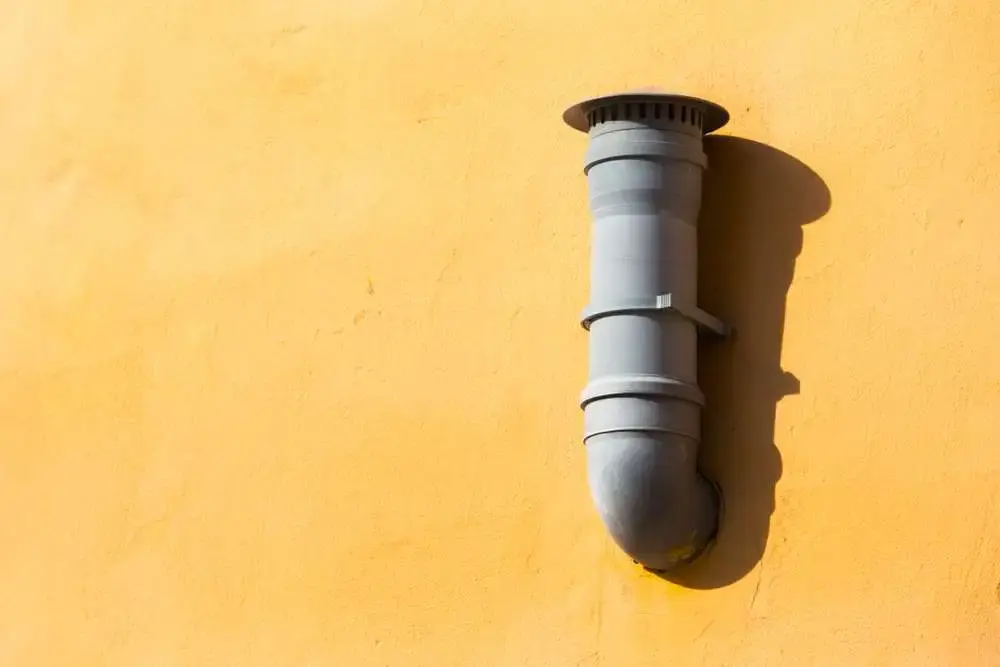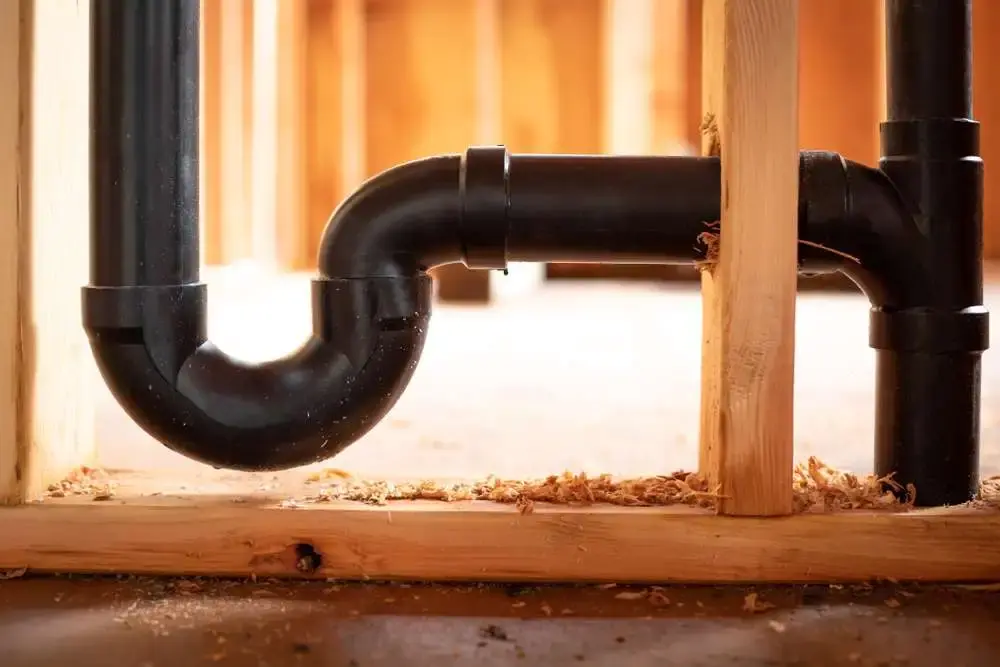We offer an affordable plumbing design process that is quick and efficient, with vent piping receiving the same attention as all the other elements.
Our superior vent piping designs successfully eliminate the unpleasant pungent sewage smells that might otherwise permeate the interior of the building.
Our expert MEP engineers have a thorough knowledge and understanding of the plumbing codes and regulations needed to ensure compliance.

Vent piping must be designed to allow the air to flow freely, without unnecessary expansion or compression. When one considers that the plumbing system includes absolutely everything related to water supply and distribution as well as waste, the importance of vent piping design becomes apparent. NY Engineers offer a cost-effective plumbing design process that is quick and efficient, with vent piping receiving the same attention as all the other elements.
We are one of the fastest growing MEP design firms in the construction industry. We pride ourselves on having a fast turnaround while providing cost effective solutions. We are licensed in 50 states and are your one stop shop for all MEP design needs.
We are licensed in all 50 states!
We design to the perfection
Enjoy our lightening fast turnaround
We have completed so far!
Our designs are approved by DOB in one go
The best service experience in the market
All plumbing systems must be designed with a system of vent piping that will allow air to be admitted or emitted without subjecting the seal of any fixture trap to a pneumatic pressure differential that is not more than 1 inch of water column (or 249 Pa or pascal). This pressure is also equivalent to a force of 1 newton acting over an area of 1 square meter.
Furthermore, every trap and fixture with a trap, that prevents the emission of sewer gases without affecting the flow of wastewater or sewage through the trap, must be vented in accordance with a venting method specified in the relevant local Code. These are specified in Chapter 9 Vents, in the New York City (NYC) Plumbing Code 2014.
Vent piping must be designed to allow the air to flow freely, without unnecessary expansion or compression.
When one considers that the plumbing system includes absolutely everything related to water supply and distribution as well as waste, the importance of vent piping design becomes apparent. More specifically, the plumbing system includes:
In effect, the vent piping system supplies fresh air and removes sewer gases and foul contaminated air that builds up in the plumbing system, and regulates the air pressure in the pipes. Together with the pipes that remove grey water and drains the remove sewage, the vent piping system forms a drain-waste-vent (DWV) system.

Vent systems comprise pipes that are designed and installed so that they provide a flow of air to and from drainage systems, or circulation of air within drainage systems to protect trap seals from siphonage and backpressure.
The NYC Plumbing Code 2014 requires that all buildings with plumbing installed have at least one four-inch (102 mm) vent stack or stack vent. This should be designed to run as directly as possible from the drain in the building, at the lowest part of the drainage system, through the roof to the air above.
Vent stacks are vertical vent pipes that are installed primarily to provide circulation of air between parts of the drainage system. These should connect either to the base of a drainage stack or to the building drain, and one is required for every drainage stack that is equal to three branch intervals or more. The latter is a vertical measurement of 8 feet (2438 mm) or more between the drainage stack and the connections of horizontal branches of the plumbing system.
Stack vents are the extensions of waste or soil stacks that extend above the highest horizontal drain that is connected to the stack. These should be designed as an extension of the drainage stack. The vent extension provides for the air that is dragged down the stack and supplies a means for the gravity circulation of air through the vent piping system. The vent stack also prevents excessive pressure from developing in the lower part of the drainage stack.
Different types of vents are provided for fixtures and traps. They include:
The traps of floor drains and laboratory sinks may be vented with combination waste and vent piping systems. This is done in conjunction with a horizontal branch waste pipe that forms part of an independent waste system designed to carry flammable oil or acid.
Design specifications for combination systems are specified and the drain and vent pipe must have a no more than a one-half unit vertical in 12 units horizontal (4%) slope. The minimum slope depends on the size of the drainage pipe. If it is 2½ inches or less the minimum slope must be ¼ inch per one foot; 3-6 inch pipe requires 1/8 inch per foot; and if the drainage pipe is 8 inches or larger, the slope may be less – 1/16 inch per foot.
This kind of system requires either a dry vent connection or it may be connected to a horizontal drain that is vented in accordance with the NYC Plumbing Code.
Combination drain and vent systems that are connected to building drains that receive a discharge from stacks must incorporate a dry vent. Furthermore, the vent connection needs to extend at least 6 inches (152 mm) vertically above the flood level rim of the highest fixture being vented before it can be offset horizontally. This rim is, of course, the edge of the receptacle over which water can overflow.
The size of the combination drain and vent pipe used is directly related to the number of drainage fixture units (dfu) included in the design. The more dfu there are, the greater the diameter of the pipe will need to be. So, for example, if only three dfu are connected to a horizontal branch or stack, or four are connected to a building drain or sub-drain, the diameter of the pipe will be 2 inches (50.8 mm). If there are as many as 360 dfu connected to a branch or stack, or 575 to a building drain, 6 inch-diameter drain and vent pipe must be used.
More complicated engineered vent systems are sometimes necessary, particularly for larger buildings and industrial situations. Apart from anything else, the maximum length of a pipeline designed for individual fixture vents to vent branches and headers must conform to minimum pipe diameters at specific vent airflow rates.
Once the design is complete, a licensed professional engineer is required to inspect and certify the system.
The regulations allow computerized vent design provided the computer program design methods used are approved by the Commissioner of Buildings who ensures that these are compliant with the minimum standards of the Code.
Vent systems of computerized systems are based on the air capacity requirements of the relevant drainage system under peak load conditions. As with engineered systems, a licensed professional engineer is required to inspect and certify the completed system.
Our MEP engineers are fully equipped to design both engineered and computerized vent systems.

The materials that are acceptable for vent pipe correspond with those used for sanitary drainage, with differentiation between above-ground and below-ground pipes. Each type of pipe must conform to specified standards.
Above-ground vent pipes for residential buildings that are no more than five stories high may be made of several types of plastic:
Glass pipe is also permitted along with various types of metal pipe made from brass, cast-iron, copper and copper-alloy pipe and types of tubing, ductile iron, galvanized steel pipe, high silicone case iron, and stainless steel drainage systems.
Underground vent pipes for residential buildings five stories or less in height may be made from PVC plastic pipe in IPS diameters with a solid, cellular core or composite wall.
Alternatively, cast-iron pipe, copper or copper-alloy tubing, ductile iron, non-asbestos fiber cement pipe, or stainless steel drainage systems may be used.
The Code also specifies acceptable materials for vent pipe flashings, which should be made of either sheet copper or sheet lead:
The sizing of all elements of vent piping design is governed by specifications and regulations. This includes the size of stack vents and vent stacks, individual, branch, circuit, and relief vents, as well as multiple branch and ejector vents.
The minimum diameter of vent stacks and stack vents is worked out from the “developed length” of the pipeline and the total number of drainage fixtures that are connected to them. There is also an important rule of thumb, which is that the diameter may never be less than half the diameter of the drain that the stack vent or vent stack is serving, or less than 1½ inches (38 mm) in diameter.
The Code provides an easy-to-read table to determine sizes. This shows the diameter of soil or waste stacks in inches, the total number of fixture units to be vented, and the maximum developed length of vent in feet (measured from the vent connection to the open air), and diameter of the vent in inches.
The developed length of any individual, branch, circuit, or relief vent is measured from the farthest point of the vent connection to the drainage system, to the point that it connects to the stock vent or vent stack or termination outside of the building.
The diameter of individual and other vents needs to be at least half the required diameter of the drain served, but vent pipes must be at least 1½ inches (38 mm) in diameter. Vents are sized in accordance with the table mentioned above unless there are more than 10 branch intervals, in which case a similar but different table is used.
There are also tables to determine the size of ejector vents including sewage pumps that may or may not be pneumatic. Those that are not pneumatic operate at atmospheric pressure and receive drainage discharge under gravity flow conditions.
382 NE 191st St , Suite 49674
Miami, Florida 33179276 5th Avenue, Suite 704 #904
New York, NY 10001